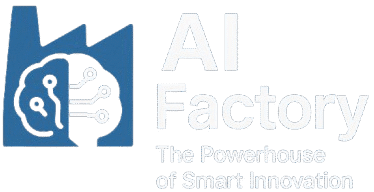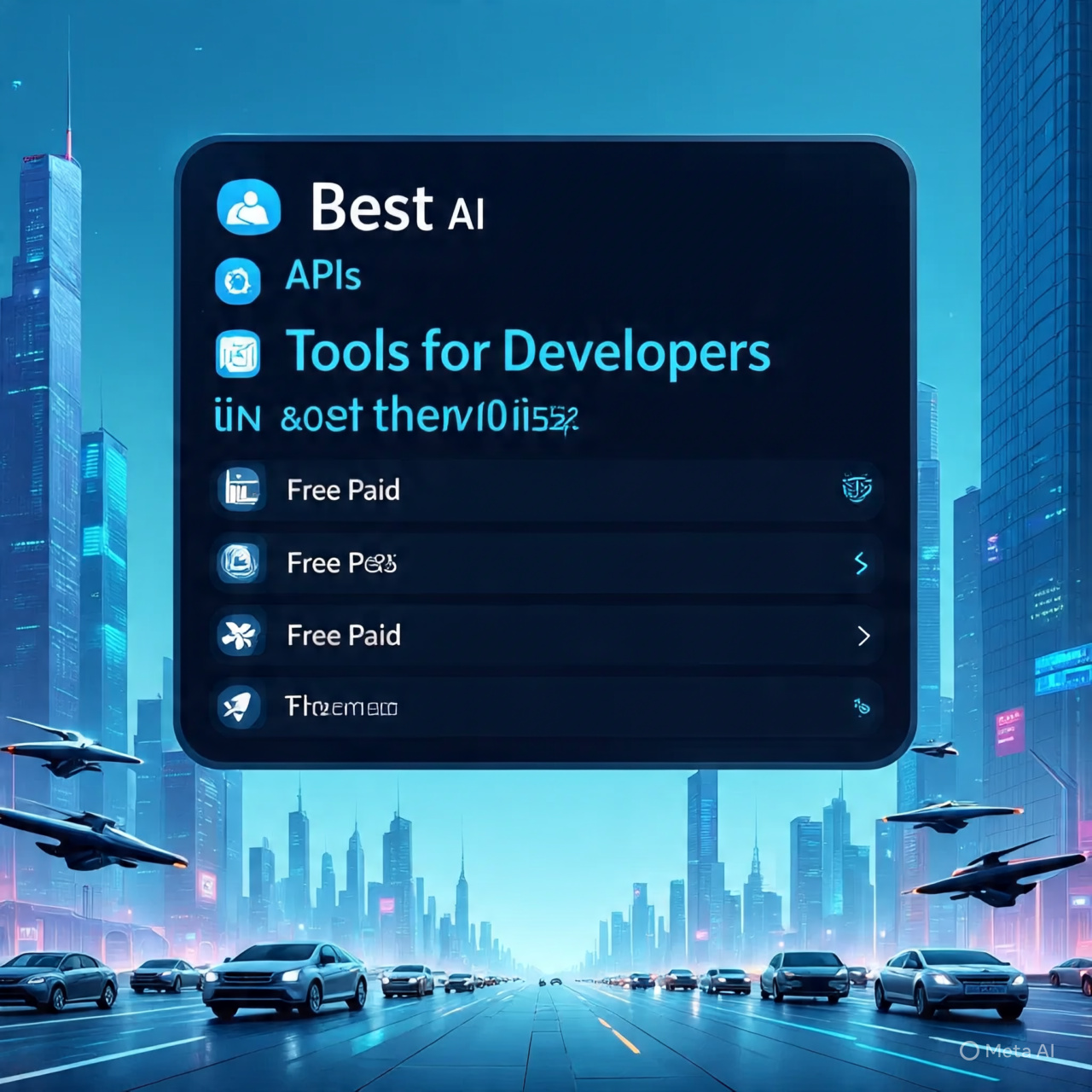Best AI APIs & Tools for Developers in 2025 [Free & Paid]
Artificial Intelligence continues to revolutionize software development, enabling developers to build smarter, faster, and more efficient applications. But with an ever-growing landscape of AI APIs and tools, choosing the right ones for your projects can be overwhelming. Whether you are a seasoned AI developer or just starting your journey, knowing the best AI APIs & tools for developers in 2025 — both free and paid — is essential to stay ahead in this competitive tech era.
Background: Why AI APIs & Tools Matter in 2025
AI technology has matured exponentially in recent years. From natural language processing and computer vision to speech recognition and predictive analytics, AI capabilities have become accessible via APIs that developers can integrate directly into their applications without needing to build complex models from scratch.
In 2025, AI APIs & tools are no longer luxury add-ons; they are fundamental building blocks. Cloud providers, startups, and tech giants alike offer a wide range of AI services tailored for diverse developer needs. Choosing the right AI API or tool can drastically cut development time, improve product quality, and unlock innovative features that delight users.
Detailed Comparison of Top AI APIs & Tools for Developers in 2025
| AI API / Tool | Type | Key Features | Pricing | Best For |
|---|---|---|---|---|
| OpenAI GPT-4 API | Language / NLP | Advanced text generation, summarization, translation, conversation | Paid (Tiered usage-based pricing, some free trial credits) | Chatbots, content generation, coding assistants |
| Google Cloud AI Platform | Multi-purpose AI | Vision, NLP, AutoML, translation, speech-to-text | Paid (Free tier available) | Enterprise apps, scalable AI solutions |
| Hugging Face Inference API | Language & Vision | Access to thousands of pre-trained models for text & image tasks | Free & Paid plans | Rapid prototyping, custom NLP, vision projects |
| IBM Watson AI | Multi-purpose AI | Speech, language, vision, machine learning tools | Paid with free lite plan | Enterprise AI, healthcare, finance |
| Microsoft Azure Cognitive Services | Multi-purpose AI | Speech, vision, language, anomaly detection, decision AI | Paid with free tier | Business apps, analytics, bot frameworks |
| AssemblyAI | Speech-to-Text | Accurate transcription, sentiment analysis, topic detection | Paid, pay-as-you-go pricing | Podcast transcription, call analysis |
| Replicate | Model Hosting | Run and share open-source ML models easily | Free & Paid | ML researchers, developers experimenting with new models |
Key Features & Benefits of the Best AI APIs & Tools
1. Advanced Natural Language Processing
APIs like OpenAI GPT-4 and Hugging Face enable developers to leverage cutting-edge NLP capabilities such as text generation, sentiment analysis, summarization, and question answering. These tools make building conversational agents, chatbots, and content creation tools seamless and highly effective.
2. Comprehensive Multi-Modal AI Services
Platforms like Google Cloud AI, IBM Watson, and Microsoft Azure Cognitive Services offer broad AI toolkits — from image recognition to speech-to-text — allowing developers to integrate various AI functions from a single ecosystem, improving compatibility and support.
3. Easy Model Deployment & Experimentation
Services like Replicate make it easy for developers and researchers to deploy, test, and share machine learning models without complex infrastructure setups. This accelerates innovation and experimentation in AI-driven applications.
4. Cost Efficiency with Free Tiers & Pay-as-You-Go Models
Many AI APIs provide free tiers or trial credits, enabling developers to explore and prototype without upfront costs. The pay-as-you-go pricing models ensure scalability and affordability as projects grow.
Pros and Cons of Popular AI APIs & Tools
| API / Tool | Pros | Cons |
|---|---|---|
| OpenAI GPT-4 API | State-of-the-art NLP performance Robust developer community & documentation Wide use cases from chatbots to coding assistants | Cost can be high for heavy usage Some latency on large requests Privacy concerns with sensitive data |
| Google Cloud AI Platform | Comprehensive AI tools in one platform Strong scalability & enterprise support Free tier for experimentation | Complex pricing structure Steeper learning curve |
| Hugging Face Inference API | Access to thousands of open-source models Flexible for NLP and vision tasks Free tier available | Performance depends on model choice Limits on free usage |
| IBM Watson AI | Strong in enterprise use cases Good for specialized domains like healthcare Multiple AI services bundled | Pricing can be expensive for startups UI and integrations less modern |
Use Cases: Who Should Use These AI APIs & Tools?
Startups & Small Businesses
If you want to integrate AI without a big team or budget, free tiers and pay-as-you-go pricing from providers like OpenAI or Hugging Face can be ideal. Rapid prototyping and minimal setup time make these tools attractive for MVPs and product launches.
Enterprise Developers
Large-scale applications needing robust, scalable AI will benefit from Google Cloud AI, IBM Watson, or Microsoft Azure Cognitive Services. These platforms provide the security, compliance, and support enterprises require.
Machine Learning Researchers
Developers and researchers who want to experiment with new or open-source models will find Replicate and Hugging Face invaluable for testing and deploying models without heavy infrastructure.
Content Creators & Chatbot Builders
APIs like OpenAI GPT-4 are perfect for building sophisticated chatbots, content generation tools, or virtual assistants that engage users naturally and effectively.
Frequently Asked Questions (FAQs)
Q1: What are the best free AI APIs available for developers in 2025?
Many AI providers offer free tiers including Hugging Face Inference API, Google Cloud AI Platform, and IBM Watson Lite plans. OpenAI also provides free trial credits. These free options let developers test AI functionalities without upfront costs.
Q2: How do I choose the right AI API for my project?
Consider your project’s specific needs—whether you need NLP, computer vision, speech recognition, or multi-modal AI. Also evaluate pricing, scalability, ease of integration, and data privacy policies before choosing the API.
Q3: Are paid AI APIs worth the cost?
Paid APIs generally provide higher accuracy, better support, scalability, and advanced features. For production apps with real users, investing in paid AI tools is often worthwhile to ensure reliability and quality.
Q4: Can I customize AI models through these APIs?
Some platforms, like Google Cloud AutoML and Hugging Face, allow you to fine-tune or train custom models. However, many APIs offer pre-trained models that are ready to use but with limited customization.
Q5: How secure are AI APIs when handling sensitive data?
Security varies by provider. Enterprise platforms like Azure and IBM Watson prioritize data protection and compliance. Always review the provider’s privacy policies and consider on-premise or private cloud options for sensitive applications.
Conclusion: The Best AI APIs & Tools for Developers in 2025
The AI ecosystem in 2025 offers a rich variety of APIs and tools tailored to every developer’s needs—from beginner-friendly free APIs to enterprise-grade platforms. Choosing the right AI API depends largely on your project requirements, budget, and scalability goals. Whether you want to build conversational AI with OpenAI GPT-4, leverage multi-modal AI with Google Cloud, or experiment with open-source models via Hugging Face and Replicate, the opportunities to innovate are vast.
Start with free tiers to prototype, then scale with paid plans as your application grows. Keeping an eye on pricing, feature updates, and community support will help you stay competitive in this fast-evolving AI landscape.
Final Verdict: Our Top Picks for 2025
For most developers seeking versatile, cutting-edge NLP capabilities, the OpenAI GPT-4 API remains the standout choice thanks to its unmatched text generation quality and ecosystem. For comprehensive AI needs with enterprise reliability, Google Cloud AI Platform and Microsoft Azure Cognitive Services offer robust, scalable solutions. Meanwhile, Hugging Face excels for open-source enthusiasts and rapid experimentation.
Ultimately, your choice should align with your project goals, budget, and preferred development workflow. Explore, experiment, and harness these powerful AI APIs and tools to build the next generation of intelligent applications in 2025 and beyond.

